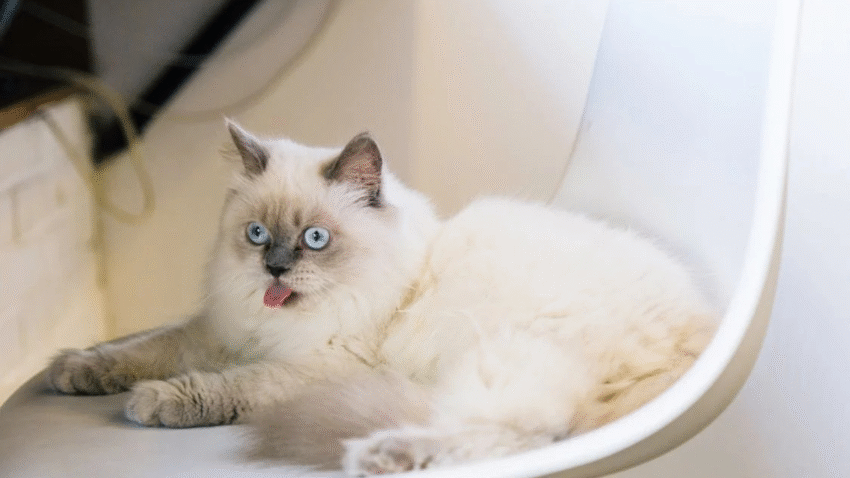Introduction
Curious about feeding your cat a raw diet but not sure where to start? Transitioning your cat to raw food can have benefits like better digestion, healthier skin, and more energy — but it needs to be done safely and gradually. In this guide, you’ll learn how to introduce raw food into your cat’s diet step by step, while minimizing health risks and digestive upset.
Why Raw Feeding Matters for Cats
Cats are obligate carnivores, meaning their bodies are designed to digest raw meat, organs, and bones. A balanced raw diet can mimic what a cat would eat in the wild — offering natural nutrients without fillers, preservatives, or artificial additives found in some commercial foods.
Potential benefits of a raw diet include:
- Shinier coats and healthier skin
- Reduced stool odor and volume
- Increased energy and lean muscle
- Improved dental health
However, raw feeding must be done carefully. Unbalanced meals or poor hygiene can lead to nutritional deficiencies or bacterial contamination.
Step-by-Step Guide to Introducing Raw Food Safely
1. Consult Your Vet First
Before starting a raw diet, speak with your veterinarian — especially if your cat has pre-existing health issues. Your vet can help you determine:
- If raw feeding is appropriate
- Which raw diet type is best (homemade, commercial, or freeze-dried)
- What supplements may be required
2. Choose a High-Quality Raw Food Source
There are three main options:
- Commercial frozen raw diets: Pre-balanced and complete; just thaw and serve.
- Freeze-dried raw: Great for beginners. Often served dry or rehydrated with water.
- Homemade raw meals: Requires careful planning and balance; best for experienced raw feeders.
Ensure any raw product is labeled as “complete and balanced” and follows AAFCO or NRC guidelines.
3. Start With a Gradual Transition
Mix raw food with your cat’s current diet over 7–14 days:
- Days 1–3: 75% old food + 25% raw
- Days 4–6: 50% old food + 50% raw
- Days 7–10: 25% old food + 75% raw
- Days 11+: 100% raw
If your cat shows signs of digestive upset (diarrhea, vomiting), slow the transition and consult your vet.
4. Begin With Simple Proteins
Start with a single, easy-to-digest protein like chicken or turkey. Avoid mixing proteins in the beginning — this makes it easier to spot allergies or sensitivities.
Once your cat is used to one protein, gradually introduce others like:
- Rabbit
- Duck
- Lamb
- Fish (occasionally)
Variety is important over time to prevent nutritional gaps.
5. Handle Raw Meat With Care
Always practice good hygiene to prevent bacterial contamination:
- Wash hands, bowls, and surfaces after handling raw meat
- Store food in airtight containers in the fridge or freezer
- Discard uneaten food after 30 minutes at room temperature
Safety is as important for you as it is for your cat.
6. Add Essential Supplements (If Homemade)
If preparing meals from scratch, you may need to add:
- Taurine (critical for cats)
- Omega-3 fatty acids
- Calcium (if not feeding whole bones)
- Vitamin E, B complex, and trace minerals
Homemade raw meals must be carefully balanced. Use a trusted recipe guide or work with a feline nutritionist.
Common Mistakes to Avoid
1. Switching Cold Turkey
Sudden diet changes can cause gastrointestinal distress. Always introduce raw food gradually over a week or more.
2. Feeding Unbalanced Meals
A diet of just raw chicken isn’t enough. Over time, this can lead to serious nutrient deficiencies. Always aim for variety and balance.
3. Skipping Supplements
Homemade diets often lack crucial vitamins and minerals. Skipping supplements can have long-term health consequences.
4. Ignoring Food Safety
Raw meat can carry bacteria like Salmonella or E. coli. Poor handling can risk both feline and human health. Always follow food safety practices.
5. Not Monitoring Your Cat’s Health
Keep an eye on:
- Weight
- Coat condition
- Stool quality
- Energy levels
Any significant change warrants a vet visit.
Extra Tips & Recommendations
1. Use a Feeding Schedule
Feed raw meals at consistent times (twice a day works well). Remove leftovers after 30–45 minutes to prevent spoilage.
2. Serve at Room Temperature
Cold food may upset your cat’s stomach. Thaw meals completely and let them reach room temperature before serving.
3. Introduce Raw Meaty Bones (Optional)
Once your cat is fully transitioned, you can occasionally offer raw bones (like chicken necks or wings) to support dental health. Never feed cooked bones — they can splinter and cause injury.
4. Freeze Portions Ahead
If you’re using homemade or bulk raw food, freeze individual portions in airtight bags or containers. Thaw in the fridge the night before feeding.
5. Watch for Detox Symptoms
Some cats may shed more, have soft stools, or experience mild changes during the transition. These usually pass in a week or two. If issues persist, contact your vet.
Conclusion
Introducing raw food into your cat’s diet can be a rewarding decision for their health — as long as it’s done safely. Start slow, choose balanced meals, handle meat properly, and monitor your cat’s response. Whether you go with commercial raw or make it at home, consistency and education are key to a smooth transition.
🐾 Fresh food, strong health — your cat’s raw journey starts with your care.
